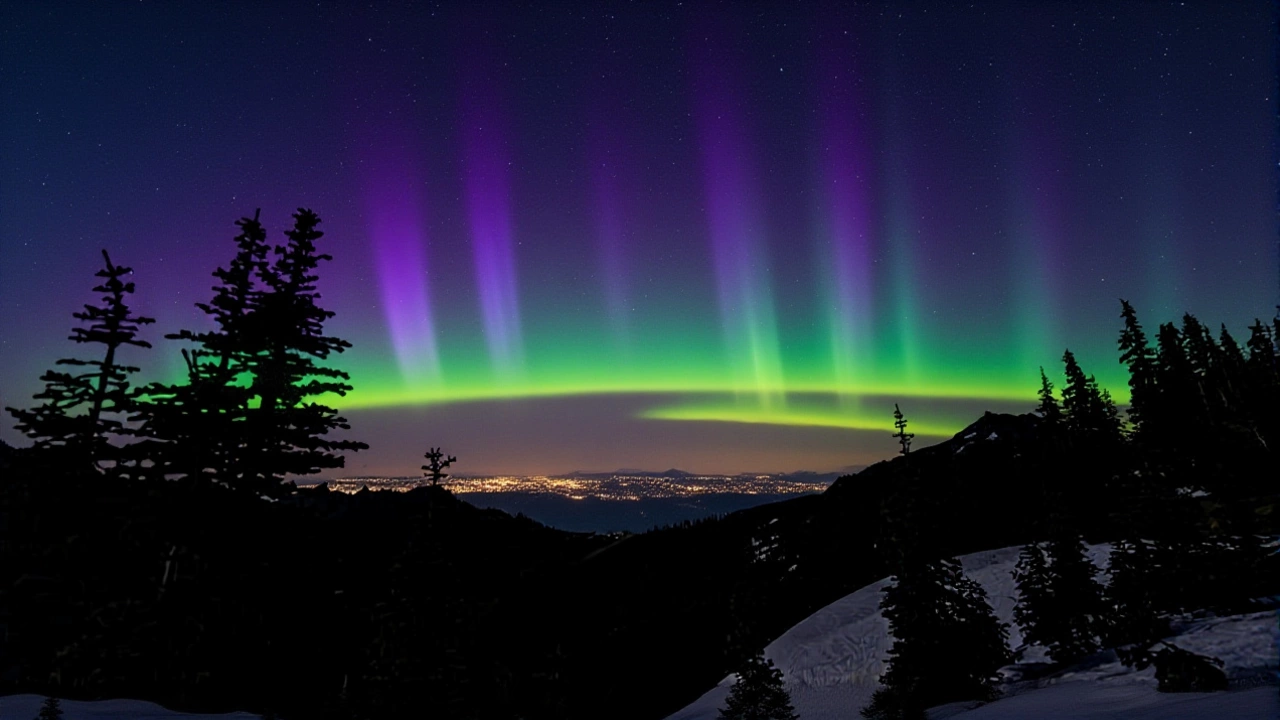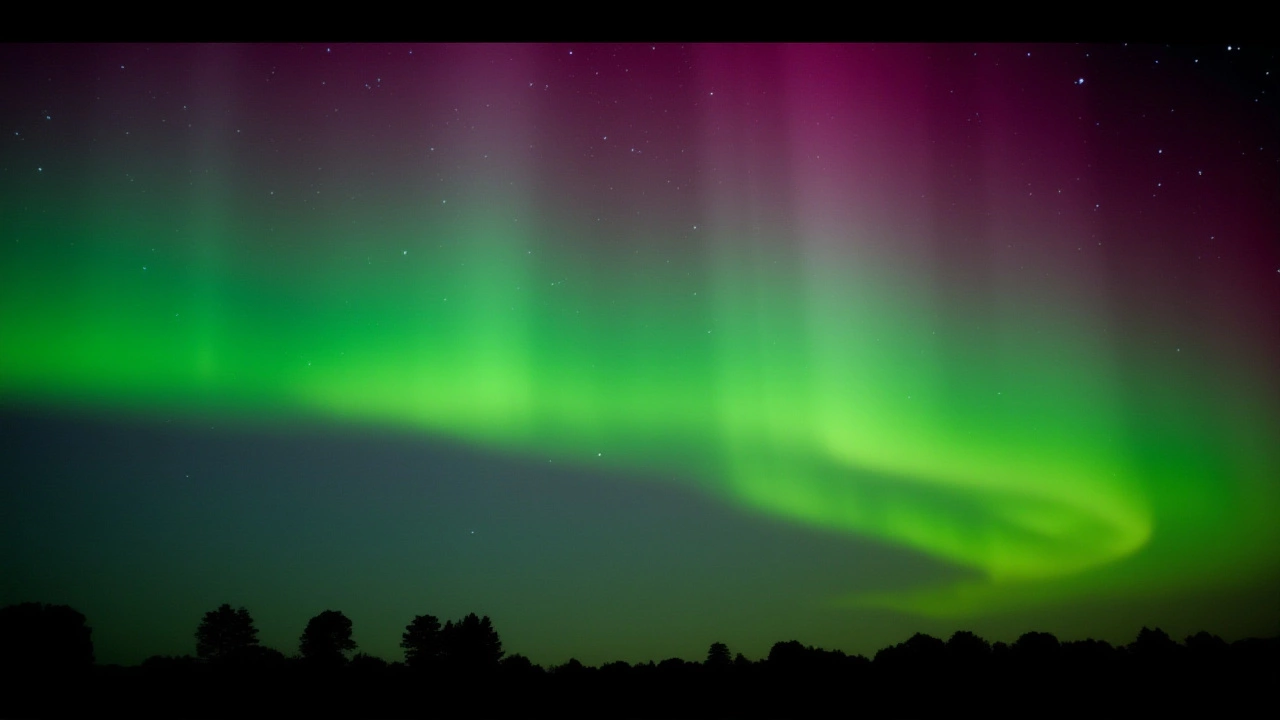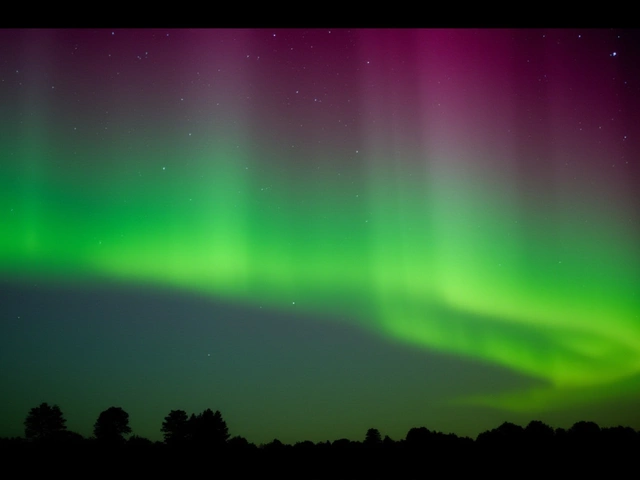When NOAA’s Space Weather Prediction Center issued a G2 (moderate) geomagnetic storm watch for October 1, 2025, skywatchers from coast to coast started checking their aurora forecasts. The storm, driven by a high‑speed solar wind stream clocking 700‑800 km/s, pushed the northern lights far enough south that residents of the United States — from New York to Idaho — could catch a glimpse, weather and light‑pollution permitting. The Kp index peaked at an estimated 5.67 between 5 p.m. and 8 p.m. EDT, firmly landing the event in G2 territory and flirting with G3 levels as the magnetic field stayed southward‑oriented. Even the U.K. Met Office reported auroral displays over northern Scotland, while observers in New Zealand’s South Island saw faint ribbons of green on the same night.
What sparked the October 1 geomagnetic storm?
The sun entered a particularly active phase in late September, unleashing a series of coronal mass ejections (CMEs) and M‑class flares from an expansive sunspot cluster in the solar northeast quadrant. While none of the CMEs were Earth‑directed, the lingering high‑speed solar wind stream — a stream of charged particles traveling at roughly 750 km/s on average — slammed into Earth’s magnetosphere on the evening of October 1. This encounter forced the planet’s magnetic field lines to tilt southward, a key ingredient for energizing the auroral oval.
“The sustained southward Bz component created a perfect conduit for solar energy to pour into the upper atmosphere,” explained Dr. Emily Hill, senior scientist at the Space Weather Prediction Center. “When the Kp index climbs above 5, we routinely see the aurora dip into the mid‑latitudes of the United States.”
Where the aurora was visible
According to NOAA’s forecast map released at 10 a.m. EDT on October 1, seven U.S. states fell fully or partially above the aurora view line: Minnesota, Wisconsin, Michigan, New York, Vermont, Idaho, and Montana. The map highlighted a broad swath stretching from the Great Lakes region into the Pacific Northwest. In practice, the most reliable sightings came from areas with dark skies away from city lights — think the North Shore of Lake Superior, the Adirondack high country, and the Bitterroot Valley.
On the Canadian side, parts of Ontario and Quebec reported faint curtains, while in Europe the aurora’s reach extended as far north as the Orkney Islands. Down under, the South Island’s Otago region offered a rare southern‑hemisphere glimpse, though it faded quickly as the solar wind slowed on October 2.
Potential impacts on technology
G2 storms are more than a pretty light show. NOAA warned that moderate geomagnetic activity can trigger short‑wave radio disruptions, affect GPS positioning accuracy, and induce minor fluctuations in power grids, especially at high latitudes. In Alaska, utility operators noted a transient dip of about 2 % in voltage on a regional substation, a blip that was quickly corrected.
Satellite operators also kept a close eye on the event. “We saw a brief increase in satellite drag for low‑Earth‑orbit assets,” said Mark Delgado, chief engineer at a commercial satellite firm. “It’s not enough to alter mission plans, but it’s a reminder that space weather is a real operational factor.”

What’s next for space weather?
Following the October 1 peak, NOAA’s 24‑hour outlook predicts the Kp index will settle around 3.7, indicating a return to “active but not stormy” conditions. However, the Sun’s rotation means the same active region could face Earth again in roughly 27 days, potentially ushering in another round of moderate storming.
In the meantime, the Space Weather Prediction Center will continue issuing hourly updates. Enthusiasts are encouraged to download the free NOAA Aurora app, which provides real‑time alerts based on live Kp readings.
Historical context of recent solar activity
September 30, 2025, featured a surprise uptick in auroral activity when a brief G3 (strong) storm briefly illuminated the skyline over New York City. That event was triggered by a similar southward magnetic field interval, but it lasted only a few minutes before the solar wind’s velocity dropped below 600 km/s. The back‑to‑back storms of late September and early October mark the most active two‑week period this solar cycle has shown so far.
Solar cycle 25, which began in December 2019, is predicted to peak around 2025‑2026. Researchers at the National Solar Observatory note that the current sunspot number sits at 94, well above the historic average for this stage of the cycle. “We’re entering the crescendo,” said Dr. Luis Ortega, solar physicist at the observatory. “Expect more frequent moderate storms and occasional strong events throughout the next year.”
- Solar wind speed: 700‑800 km/s
- Peak Kp index: 5.67
- Storm level: G2 (moderate)
- U.S. states with visible aurora: 7
- Potential tech impacts: radio, GPS, minor grid fluctuations
Frequently Asked Questions
How far south could the aurora be seen on October 1?
The storm pushed the auroral oval down to roughly 42° N latitude, meaning parts of New York and northern Idaho experienced visible green curtains, while more southern locations only saw faint glows under very dark skies.
What caused the geomagnetic storm?
A high‑speed solar wind stream, traveling at about 750 km/s, slammed into Earth’s magnetosphere, causing the magnetic field to tilt southward. This alignment allowed solar energy to funnel into the upper atmosphere, igniting the aurora.
Will this storm affect everyday technology?
Moderate storms like G2 can cause brief radio disruptions, slightly degrade GPS accuracy, and produce minor voltage fluctuations in power grids at high latitudes. So far, no major outages have been reported, but satellite operators will monitor drag effects.
When can we expect the next aurora display?
NOAA forecasts a continued active phase, with the Kp index likely hovering around 3‑4 over the next few days. The next strong chance for a G2‑level event is tied to the Sun’s 27‑day rotation, so roughly a month from now the same active region could face Earth again.
How does this event compare to past storms?
The October 1 storm is comparable to the March 2015 G2 event that lit up the skies over Texas and the Midwest. However, it falls short of the historic March 1989 G5 storm that caused a massive power outage in Quebec.

